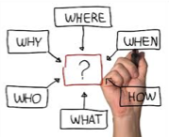As a successful small business, you want to ensure that your people represent your corporate values and vision in every sales call, every presentation and every interaction they have with your customers. On the front lines, day in and day out, they are the face your business. But, how can you develop your people without hiring a large staff? We’ve got the answer and we think you’re going to love it. We call it “O.C.G.” (On-Call, On-Going) and it’s an innovative new way to think about training.
A recent study published in the NY Times showed that employees who viewed themselves as “successful” were unlikely to seek out advice from a superior even if they believed they would benefit from some help. This resistance stems from fear of being seen as less capable by employers. This trend, of course, is troubling to small business leaders like you. If your top employees are afraid to ask for your advice when issues arise, what are the messages they then share in the field?
Here’s where we come in. Fuller Communications is proud to introduce an innovative way that small businesses can arm their employees with the tools and customized advice they require…each and every day. We call it “O.C.G” which stands for “On-Call, On-Going”. Much more than a one or two-day training session, O.C.G. offers an ongoing relationship between your employees and our executive trainers.
How does it work? With Fuller Communications’ O.C.G. program under contract, your team knows that top trainers are just a phone call away. A prospect requires a presentation on a quick deadline but the boss is out of the office? No problem. Any employee you’ve designated for our service can contact us for customized assistance at any time. No questions asked. Employees need not worry that a superior might think less of them for asking for help. Employers can rest easy knowing that their top presenters are delivering the proper messages in the proper fashion…any day and any time.
Sound interesting? We’d love to discuss how we might partner with you. Simply call or email us anytime. We look forward to hearing from you.











